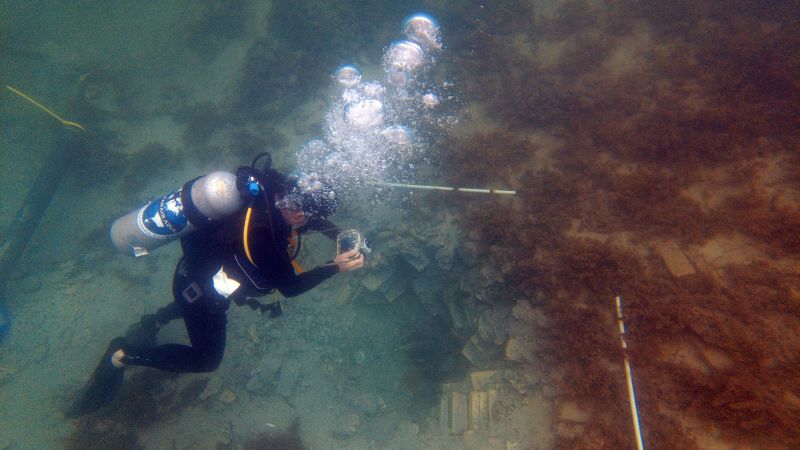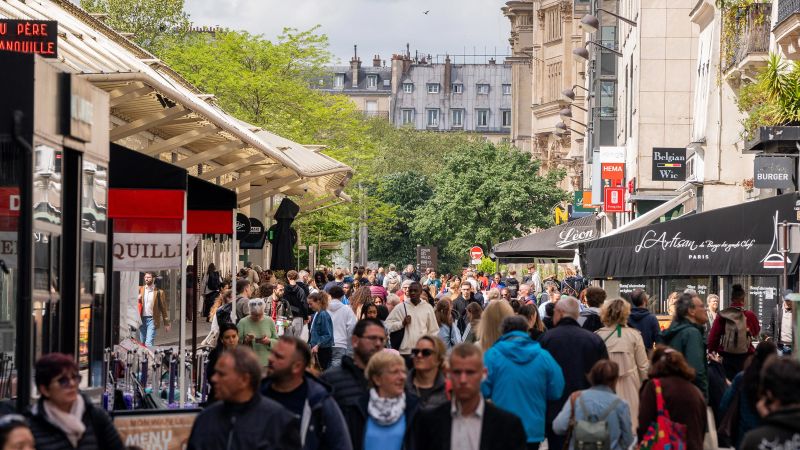London
CNN
—
Mo Abudu has a vision for Africa’s creative economy, and the next stage will start in an old lecture hall in South London. The Nigerian media mogul plans to turn the building into a hub for Nigerian food, culture and cinema.
Abudu has built a media empire across Africa, with a mission to give the continent a platform on the global stage. “For me it was just about ensuring that we have a voice,” she told CNN’s Larry Madowo.
Abudu first found fame in 2006 as the host of the Nigerian talk show “Moments with Mo,” before starting pan-African network EbonyLife TV in 2013, and EbonyLife Films in 2014. In 2019, she launched EbonyLife Place in Lagos, Nigeria, the twin of her new cultural hub, EbonyLife Place London.
Setting up in London was an obvious step for Abudu, who was born there and moved to Nigeria when she was seven to live with her grandmother. Her father died when she was 11, and she returned to the UK, moving back to Nigeria when she was 30.
Abudu had a successful career in HR, but, as she entered her fifth decade, she realized she wanted something different. “I woke up at age 40 and I said, ‘I’m done,’” recalled Abudu.
Her friends thought she was having a midlife crisis, but Abudu says that she had just been too scared to switch careers earlier. The fear is still with her now with her London venture, she says, but her attitude has changed.
“You may be scared and afraid of doing it, but you’re going to have to just be bold and do it anyway.”

Now, Abudu sees opportunity for Nigerian films in the UK – but only if they are given the right opportunities.
“Our films are traveling across the continent but they’re not really traveling to the UK for theatrical releases simply because we don’t have the cinemas here that are ready to take those films on,” Abudu said.
She is intent on making African cinema a business that can deliver returns, and says capacity building is central to that vision. Abudu developed the $50 million Afro Film Fund alongside actor Idris Elba. It will open at the end of 2025 and Abudu believes it can fill some of the gaps in the African creative economy, part of her vision of “completing the value chain” of African cinema.
“We’re training, you’re getting funding, your film is getting distributed, you’re monetizing,” she said.
Monetization is the ultimate aim in Abudu’s development of the media ecosystem. “If we don’t build it, we can’t scale the industry,” she said. “If we can’t scale the industry, we can’t monetize.”
Abudu turned 60 last year and, by all measures, seems to be only speeding up. By the end of this year EbonyLife Place London, the streaming platform EbonyLife ON, and the Afro Film Fund will all have launched. She was named as one of TIME’s 100 most influential people this year.
Elba, who worked with Abudu worked on the short film “Dust to Dreams” and is currently developing a feature film with her, penned her biography for TIME, writing: “She wastes no time. She has an infectious, can-do attitude and the tenacity to overcome any obstacle in her way.”
Despite her focus on the business of media, Abudu believes deeply in the need for more African representation in films and television outside of the continent. “It is time for us to wake up and realize that we need to push out,” she said.
“We have to tell our own stories,” she added. “We have that responsibility to tell them and, as we tell them, they must travel.”




























